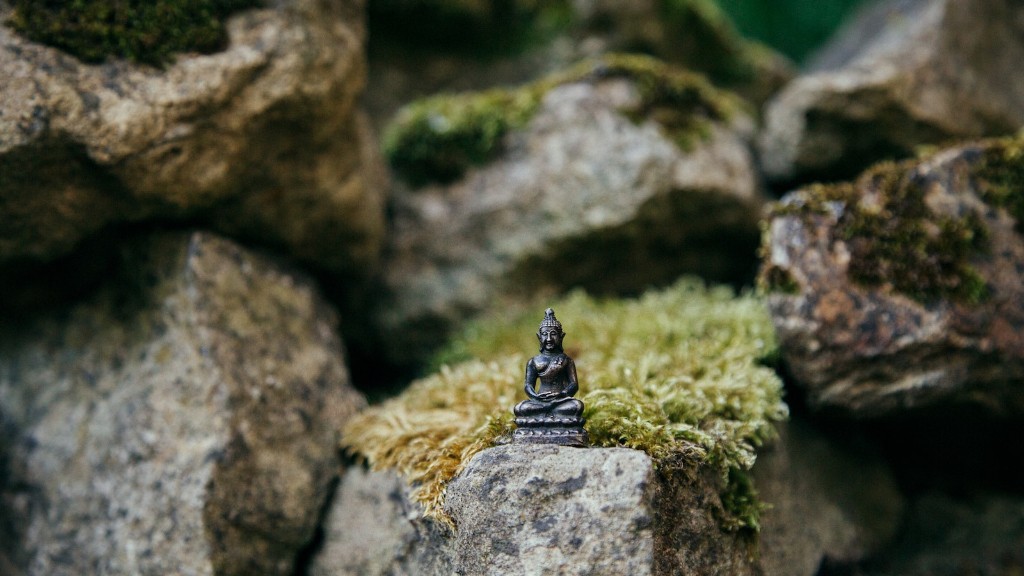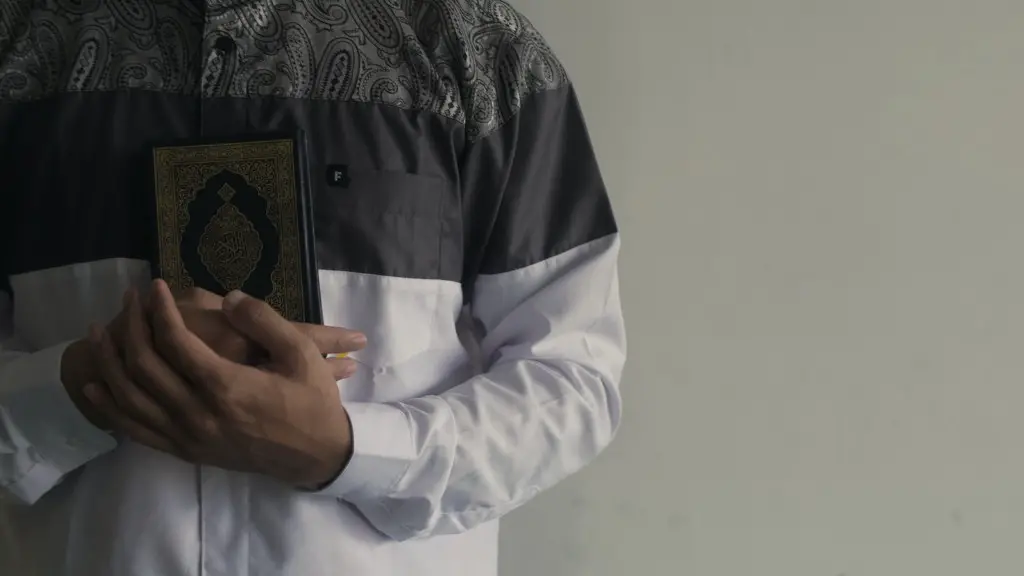The Wheel of Buddhism is a symbol that represents the teachings of Buddha. The Dharma, or truth, is represented by the hub of the wheel, while theEightfold Path is represented by the spokes. The eight spokes represent the eight steps on the path to enlightenment: right view, right intention, right speech, right action, right livelihood, right effort, right mindfulness, and right concentration.
There is no one answer to this question as it is open to interpretation. In general, the wheel of Buddhism is seen as a symbol of the Buddha’s teachings, or dharma. The different spokes on the wheel represent the different aspects of the Buddha’s teachings, while the overall circle represents the path to enlightenment.
What does the Buddhist wheel symbolize?
The Wheel of the Law, also known as the Dharmachakra, is an important symbol in Buddhism. It represents the Buddha’s First Sermon, given in the Forest at Sarnath. In this sermon, the Buddha set forth the Dharma, or Buddhist Law. The Dharma is a path that leads to liberation from suffering. The Wheel of the Law represents the Dharma in motion, and reminds us that we must always keep moving forward on the path to enlightenment.
The Chakra is a symbol of the Dharma, or the path of righteousness. It is also known as the wheel of Dharma, and its design is that of the wheel which appears on the abacus of the Sarnath Lion Capital of Ashoka. The Chakra represents the path of Virtue, Truth, and Dharma.
What do the 8 spokes on the Buddhist wheel represent
The Dharmachakra is a symbol of the Eightfold Path, which is the Buddhist path to enlightenment. The Eightfold Path consists of Right View, Right Resolve, Right Speech, Right Actions, Right Occupation, Right Effort, Right Mindfulness, and Right Concentration.
The Eightfold Path is a Buddhist teaching that outlines the path to liberation from suffering. The path is divided into eight practices: right view, right resolve, right speech, right conduct, right livelihood, right effort, right mindfulness, and right samadhi. Each practice is intended to help the practitioner develop wisdom, compassion, and inner peace.
What are the 3 main Buddhist symbols?
Bodhi tree: The Bodhi tree was a symbol of the Buddha’s enlightment.
Dharma wheel: The Dharma wheel was a symbol of the Buddha’s teaching.
Stupa: The stupa was a symbol of the Buddha’s relics.
Prayer wheels are used by many Tibetans everyday, sometimes for hours on end. Worshippers turn prayer wheels to accumulate merit, to help all beings in the world and to purify their karma (intentional actions). They are part of a meditation practice.
Prayer wheels typically contain a mantra, or sacred Buddhist text. The mantra is inscribed on paper or metal, and is wound around the outside of the wheel. As the wheel is turned, the mantra is said aloud or recited in the mind.
The use of prayer wheels is a very ancient practice, and there is evidence that they were used in India as early as the 5th century CE. The practice spread to Tibet in the 7th or 8th century, and became very popular there.
Prayer wheels are often found in Tibetan temples and monasteries. They may be large, stationary wheels that visitors can spin, or small, handheld wheels that people carry with them and spin regularly throughout the day.
What is the 12 spoke wheel in Buddhism?
A Dharma Wheel with four spokes is a symbol of the Four Noble Truths. This is because the Four Noble Truths are the foundation of the Buddhist teaching. When the wheel has eight spokes, it represents the Eightfold Path. The Eightfold Path is the Buddhist way of living. Ten spokes on a Dharma Wheel signifies the ten directions. The ten directions are the four cardinal directions, the four intermediate directions, and the two vertical directions. Twelve spokes symbolize the Twelve Links of Dependent Origination. The Twelve Links of Dependent Origination is the Buddhist teaching of how everything is interconnected.
The Belief Wheel is all about self-fulfilling prophecies, or the idea that what you believe tends to be what happens. It goes like this: Our beliefs lead to judgments, which lead to action or non-action, which lead to results that reinforce the original beliefs.
The idea behind the Belief Wheel is that if you want to change your results, you need to start by changing your beliefs. If you believe that you can accomplish something, you’re more likely to take the necessary actions to make it happen. And once you start seeing results that confirm your beliefs, it becomes even easier to keep taking the right actions and achieving your goals.
What was the original purpose of the wheel
The first wheels were most likely used as potter’s wheels around 3500 BC in Mesopotamia. It wasn’t until 300 years later that someone figured out how to use them for chariots. This evidence suggests that the first wheels were not created for transportation, but for a different purpose entirely.
This emoji is a representation of the sacred sound and icon of Om, a symbol of oneness in Hinduism and other world religions.
What are the Buddhist 8 lucky signs?
The eight auspicious signs are symbols of good fortune in Buddhism. They are often seen in Buddhist art and elsewhere. The signs represent different aspects of Buddhist teachings.
The parasol or umbrella is a traditionally a symbol of royalty and protection from the elements. In Buddhism, the Parasol symbolizes the protection the Dharma gives one from the distress and confusion caused by our samsaric lives and the burning heat of our emotions. The Dharma is like a parasol that shades and protects us from the harmful effects of our own ignorance and negative emotions.
What is the meaning of 8 fold paths
The Buddhist teaching of the means of attaining Nirvana through rightness of belief, resolve, speech, action, livelihood, effort, thought, and meditation is known as the four noble truths. This teaching is based on the belief that all beings have the potential to attain Nirvana, or perfect peace and freedom from suffering. In order to achieve Nirvana, it is necessary to follow the path of right conduct and thought. The four noble truths provide guidance on this path, and emphasize the importance of developing wisdom and compassion.
The figure of Yama, lord of the underworld, is a reminder of the Buddhist teaching of impermanence and death. Yama represents the inevitability of suffering, and his holding of the wheel of life in his hooves is a reminder that all beings are subject to the cycle of life and death. The purpose of Yama is to protect Buddhism and Buddhist people, and to remind us that even though life is full of suffering, we can find liberation from this cycle through the practice of Dharma.
What is the meaning of wheels of life?
The endless cycle of rebirth, death, and rebirth is known as samsara. This cycle is often compared to a wheel, as it is constantly moving and never-ending. Those who are caught in samsara are said to be suffering, as they are constantly being reborn into a life of Suffering. Buddhism teaches that the only way to escape this cycle is to attain Nirvana, or enlightenment.
There is no one answer to this question, as it is a matter of personal opinion. However, it is generally agreed that Siddhartha Gautama was the first person to reach a state of enlightenment, and that he is still revered as the Buddha today. Buddhists do not believe in any kind of deity or god, although there are supernatural figures who can help or hinder people on the path towards enlightenment.
What is the Buddhist symbol for life
Amitabha Buddha is often referred to as the “Buddha of Boundless Light”. He is said to be the Buddha that exists in the mind and heart of Gautama Buddha. Amitabha Buddha is the symbol of eternal life and boundless light. He is also the symbol of compassion and wisdom.
The Buddhist tradition believes that the unalome represents each person’s path in life. The road can be straight, circular, or winding, and can be filled with anxiety, fear, happiness, or love. The unalome is a reminder that everyone’s journey is unique and that we all face challenges along the way.
Final Words
The Wheel of Buddhism is a symbol of the Buddha’s teachings, which are said to lead to enlightenment. The Wheel is also a symbol of the Buddhist community, which is said to be like a wheel, with each person supporting each other.
The wheel of Buddhism is a symbol of the path to enlightenment. Buddhists believe that by following the path of the wheel, they can achieve nirvana, or a state of bliss. The wheel is also a reminder to practitioners that they must always be mindful of their actions and thoughts, as they can lead to either positive or negative karma.



